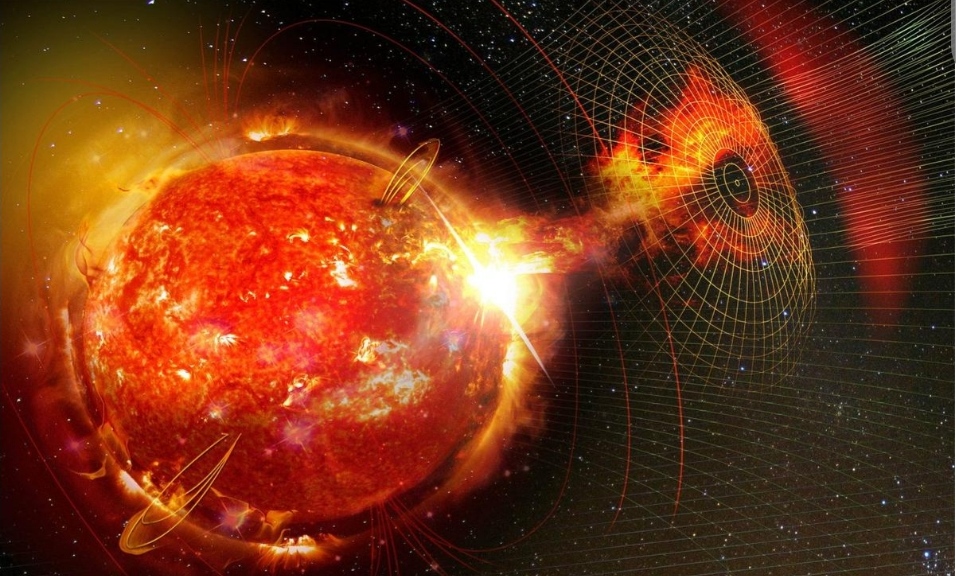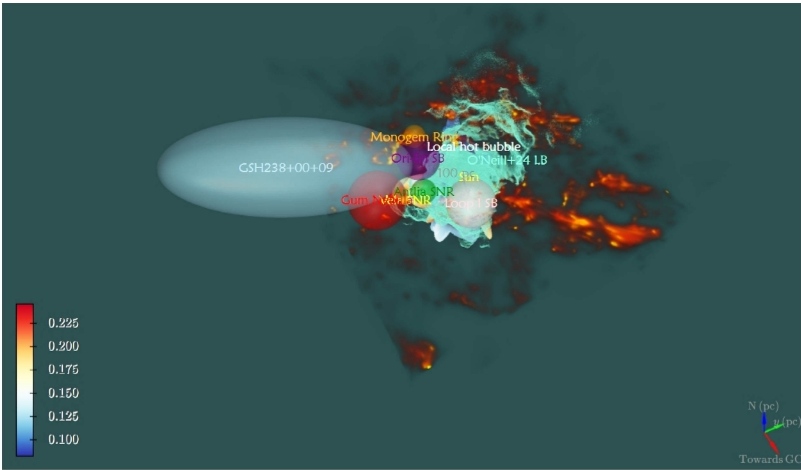Interstellar “tunnel” found that connects our solar system to other stars

By Eric Ralls
Space can surprise even those who spend their lives studying it. People often think of our solar system as just a few planets and a bunch of empty space.
Yet new observations suggest we have been living inside a hot, less dense region, and that there may even be a strange cosmic channel connecting us to distant stars.
After years of careful mapping, a new analysis reveals what appears to be a channel of hot, low-density plasma stretching out from our solar system toward distant constellations.
Astronomers from the Max Planck Institute recently confirmed it using data from the e Rosita instrument. Dr. L. L. Sala, lead researcher, and colleagues shared these findings in a paper published in the journal Astronomy & Astrophysics.
Looking beyond the familiar
For a long time, scientists have known that our Solar System sits within a peculiar region of space called the Local Hot Bubble.
This area, estimated to be about 300 light years across, formed as a result of powerful stellar explosions called supernovas.
They heated the surrounding gas, producing a low-density, high-temperature environment. Traces of these distant events still linger as wispy distributions of hot plasma.
“We find the temperature of the LHB exhibits a north-south dichotomy at high latitudes,” stated Dr. L. L. Sala, lead author of the study.
A cosmic X-ray explorer
To better understand this environment, scientists turned to eRosita. This X-ray observatory, launched as part of the Spectrum – Roentgen Gamma mission, scoured the sky to capture soft X-ray emissions.
One of eRosita’s goals is to chart hot gas in space, learn about supernova remnants, and investigate the surroundings of our neighborhood.
By combining these results with older data from ROSAT, another X-ray survey, astronomers have pieced together a more detailed picture of our local region.
They took on the challenging task of dividing the sky into thousands of bins, extracting subtle signals of warm gas, dust cavities, and interstellar structures. This painstaking approach helped isolate the faint glow of the surrounding plasma.
Puzzling cosmic channel
What stands out is the detection of a channel, or “tunnel,” that appears to stretch toward the Centaurus Constellation.
This feature seems to punch through the hot material, connecting our neighbourhood to distant star systems. Another such pathway appears to link toward the vicinity of canis Major.
Data hints these might be just one part of a larger, branching network of channels that run between star-forming regions and pockets of heated gas.
3D map of the Milky Way’s Local Hot Bubble (LHB) created from eROSITA data reveals a low-density region around the solar system, heated by ancient supernovas.
The bubble shows temperature gradients and an interstellar “tunnel” toward Centaurus, likely formed by young stars’ winds. This bubble may connect to other superbubbles, shaping the Milky Way’s structure.
The solar system entered the LHB a few million years ago, adding to our understanding of its cosmic neighborhood.

Credit: Max Planck Institute
Each route may represent a kind of interstellar backroad, a path carved out by dynamic processes and influenced by the long-ago actions of exploding stars.
Remembering old theories on cosmic channels
Ideas about a network of hot, low-density channels are not new.
Decades ago, some researchers speculated that the space around us could hold labyrinths of connected cavities. But there was never enough data to be sure. Instruments like eRosita have now provided that clarity.
By showing tunnels and pockets filled with hot plasma, the findings confirm at least one piece of these older theories.
The presence of dust cavities packed with hot gas supports the notion that supernova events shaped a connected patchwork of interstellar matter.
Not just empty space
It is tempting to think of space as nothingness, but that is misleading.
Even the void between stars contains various materials. The Local Hot Bubble is one example of how dramatic events can sculpt gas into unexpected forms.
Supernovas push out matter and energy that heat and churn the interstellar medium. Over millions of years, these actions create differences in density, temperature, and composition.
The interplay of dust, plasma, radiation, and magnetic fields leads to an environment with far more complexity than a simple vacuum.
The Max Planck Institute’s recent study argues that the average thermal pressure in this bubble is lower than expected, indicating that it might be open in some directions.
Cosmic channels: The evidence
While researchers have mapped parts of this hot region and uncovered these unusual passages, not every aspect is understood.
Some star lines seem supported by a series of linked cavities. Other regions appear more blocked.
The complexity of these patterns requires more sensitive data and further analysis. With time, better models may explain how these structures formed and how they continue to evolve.
Space’s calm appearance is deceiving. Over the past millions of years, our solar system drifted into the Local Hot Bubble.
At roughly the same time, supernovas occurred nearby. The timing is not a coincidence. Those ancient blasts likely shaped the conditions we find today.
The fact that our Sun now sits near the bubble’s center is simply chance, but it makes for an interesting perspective. It is as if we arrived late to a party, only to find a lingering aftermath of dramatic events that took place long before humans even existed.
Peering inside a hidden structure
Continuing to explore these cosmic channels will require increasingly sensitive instruments. New X-ray missions, deeper surveys, and refined models of hot gas distribution will improve our understanding.
Over time, astronomers hope to fill in more of this cosmic map and explain how these tunnels affect everything from local cosmic rays to dust flow patterns and stellar wind dynamics.
The discovery of these hidden routes and temperature differences offers a reminder that even our own cosmic backyard holds surprises.
These channels challenge old assumptions and add complexity to the picture of what lies between our Sun and the nearest stars.
As technology advances and new methods improve, these discoveries are bound to raise even more questions.
Every new piece of evidence will bring us closer to understanding both the space we inhabit today and the ancient events that shaped it.
What once seemed distant and unknowable may soon reveal connections that redefine our place in the cosmos.




